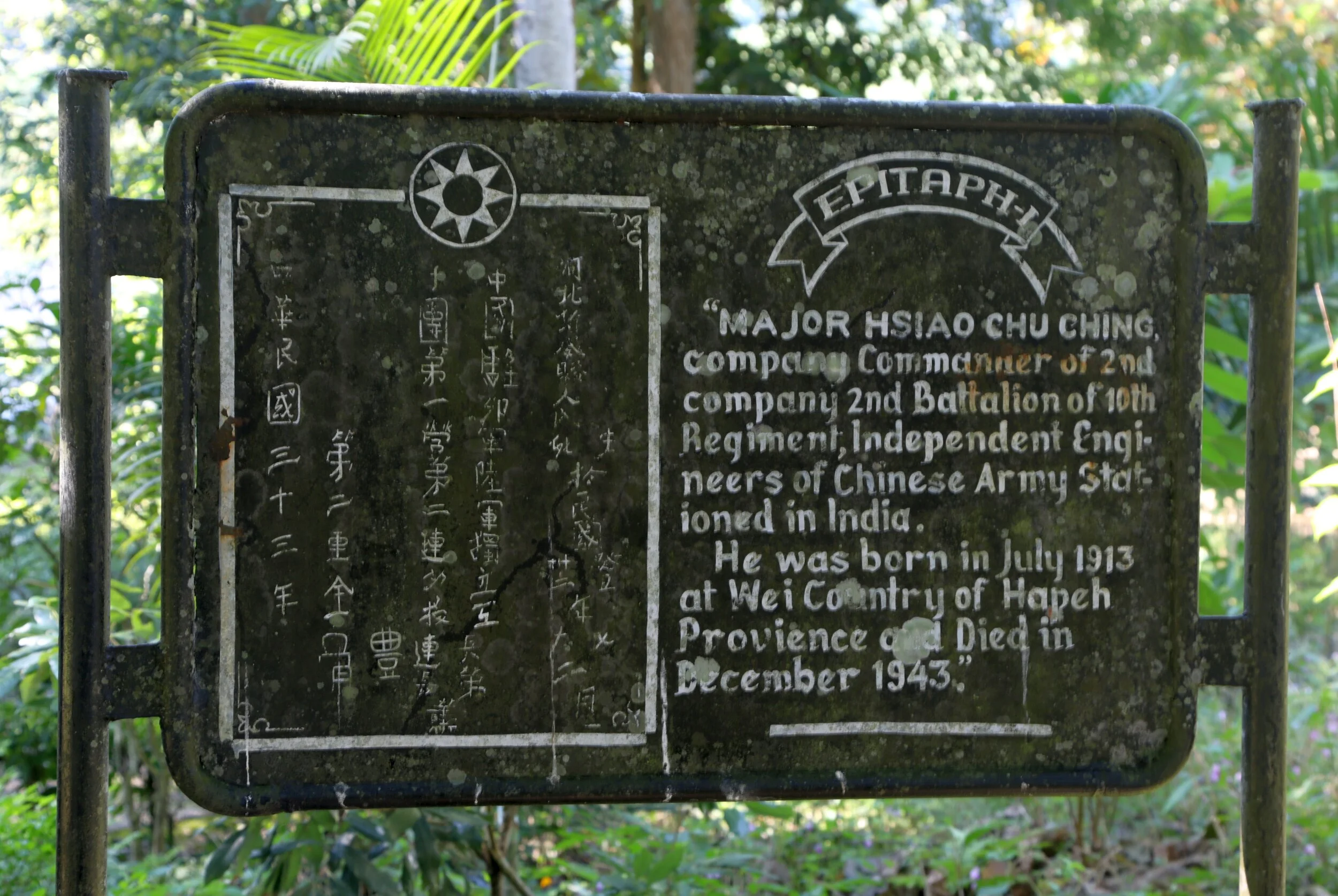The Forgotten Jairampur Cemetery
In the Changlang District of Arunachal Pradesh close to the border of Arunachal Pradesh with Myanmar on the spurs of the Patkai Mountains lay a Cemetery where were buried a number of Soldiers from the Second World War. This Cemetery lies around 30 kms before the Hell Pass or the Pangsau Pass as its called now and all the people buried here were soldiers engaged in the building of the marvel of engineering that came to be known as the Ledo Road or by its more famous name the Stillwell Road as it was named after an Amercian General. Making a Road across the Patkai would never be easy every Mile came at the cost of a Man.
The graves are said to belong to Taiwanese, Chinese, Amercan, Kachin and Indian soldiers who worked as labourers and workers on the Ledo Road which intended to connect Ledo in Assam with Kunming in China. Some of the graveyards are of Adi (Abor), Mishmi and Jaintia soldiers who fought for the Allied Forces and worked on the Road as well, but there is very little evidence left of their antecedents. Most of these people have said to expired out of disease, fatigue, malnutrition and a combination of all these factors.
This Project was undertaken at a time when the Japanese were in possession of most of Burma and were inching forward towards India and Southern China. This Road was supposed to provide supplies to the beleaguered Chinese fighting the Chinese. There were already Plane lifts from the North East India to China over what was then called the Hump, the impenetrable Hills and Jungles of the Patkai Range and it was through this Patkai Range that the Road was to be built. And as the Cemetery stands as a solemn reminder of the number of lives this endeavour would entail.
The Cemetery which contains over 1000 Graves is by far the largest Second World War Cemetery in India but surprisingly it was taken over by the Jungle and was only re-discovered in 1997. It had not only been taken over by the Jungle but extensive damage caused to the Graves by apparently wild Elephants but I assume by Grave robbers as well. During the time I visited I could see that except a few Graves all had been damaged. One of the epitaphs still readable in the Cemetery is that of a 30 year old Chinese Major who was a Company Commander and it reads as such
“Major Hsiao Chu Chung, Company Commander of the 2 nd Company, 2 nd Battalion of the 10th Regiment, Independent Engineers of Chinese Army stationed in India.
He was born in July 1913 at Wei Country of Hapeh Province and died in December 1943”
Almost all the Graves are now without an Epitaph and as I mentioned in a very bad state but the Botanical Garden built around the Cemetery does add grace to the place. And I noticed that a Tree was planted alongside each of the Graves, each Tree standing for someone who laid down their life in the War effort.
And Another board at the Cemetery, probably as a commemoration for all the unnamed Soldiers and Workers who now sleep in these decrepit Graves which reads as such
“World War Two Cemetery : These Graves bear silent testimony to those Soldiers, unlisted Workers and Labourers who ventured into the virgin Jungle amid blistering heat and laid down their lives in the line of duty during the Second World War, whilst a part of all the forces against the Imperial Japanese Army.
Their names liveth forever more”
Though the Government has now started some work on the Cemetery it is still a far cry from the very well preserved Cemeteries at Kohima and Imphal related to the same War. They are also building a Museum. But the cause of the most concern is the present status of the Graves. I can understand the neglect from the Indian side but i'm surprised that the Americans (the Road endeavour was led by the Amercians) haven't taken note and taken up the upkeep of the same. Maybe thats because no one is actually sure about the “Nationality” of these brave men.
I walked through the Cemetery and made a Video for you yourself to see the largest World War Two Cemetery in India. World War Two, the most brutal War in the History of Mankind.





